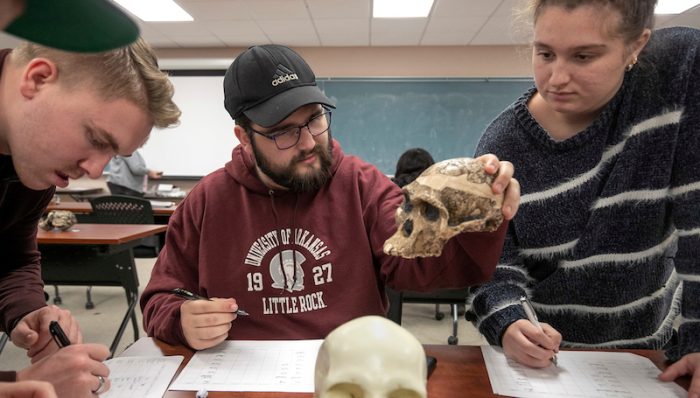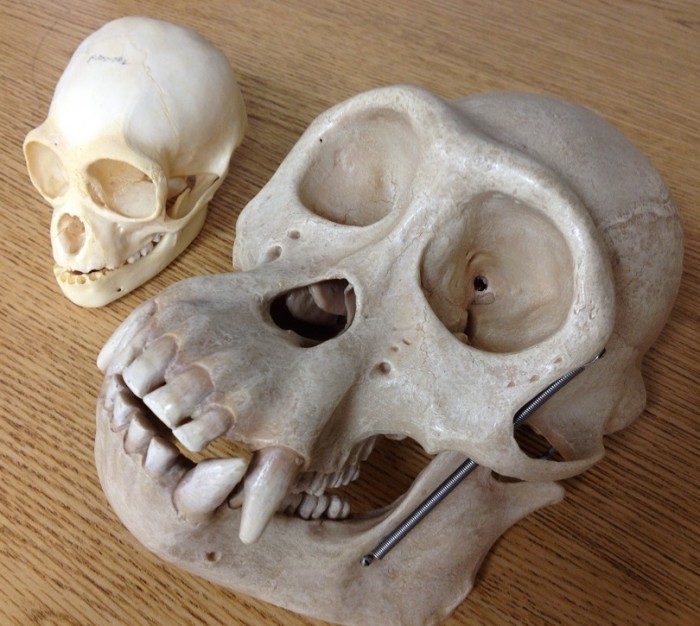Anthropology includes four broad fields: archaeology, cultural anthropology, linguistic anthropology, and physical (biological) anthropology. At UA Little Rock, we believe a well-rounded anthropology degree should be grounded in the four fields.
 Have you ever wondered why people from different parts of the world have different hair colors, skin colors, and body types? Do you want to know how scientists use the fossil record to learn about our past? These are all topics that are studied by biological (or physical) anthropologists.
Have you ever wondered why people from different parts of the world have different hair colors, skin colors, and body types? Do you want to know how scientists use the fossil record to learn about our past? These are all topics that are studied by biological (or physical) anthropologists.
Biological anthropologists are scientists who study humans as a biological species, in the same way that botanists study plants and zoologists study animals. Many biological anthropologists have training and experience in other sciences such as anatomy, geology, or zoology.
Explore this online exhibition about race and racism to find out what anthropology can teach us about who we are.
Get Started with Biological Anthropology

Once you enroll in the anthropology program at UA Little Rock, our advisors will work with you to create an informal emphasis in biological anthropology if that is your main interest.
As an anthropology major at UA Little Rock, you are required to take the introductory course in this area, ANTH 1415 (Physical Anthropology). After you have completed this course, you can register for upper level courses in biological anthropology such as Forensic Anthropology, Primatology, Race and Human Variation, and Human Paleontology.
If you are interested in biological anthropology, contact Dr. Kathryn King at kaking@ualr.edu.